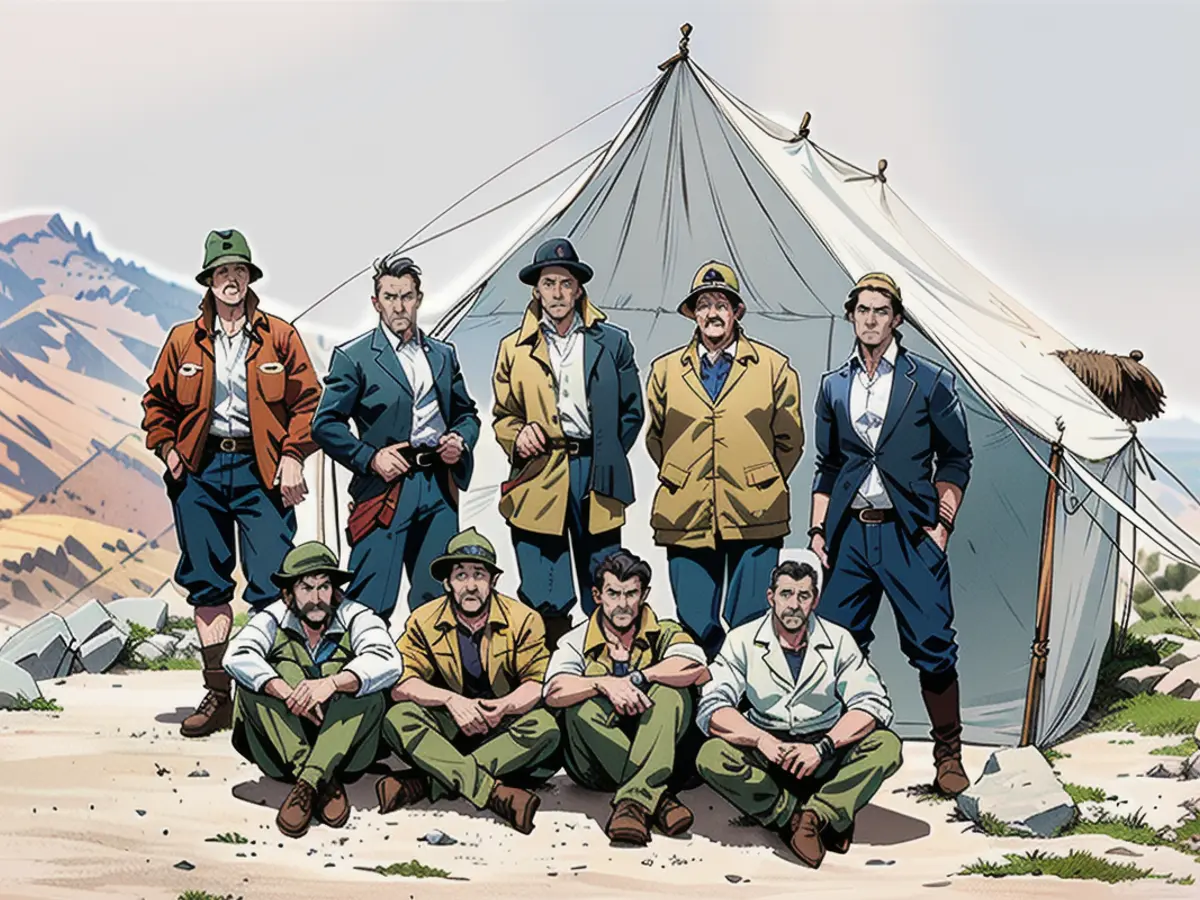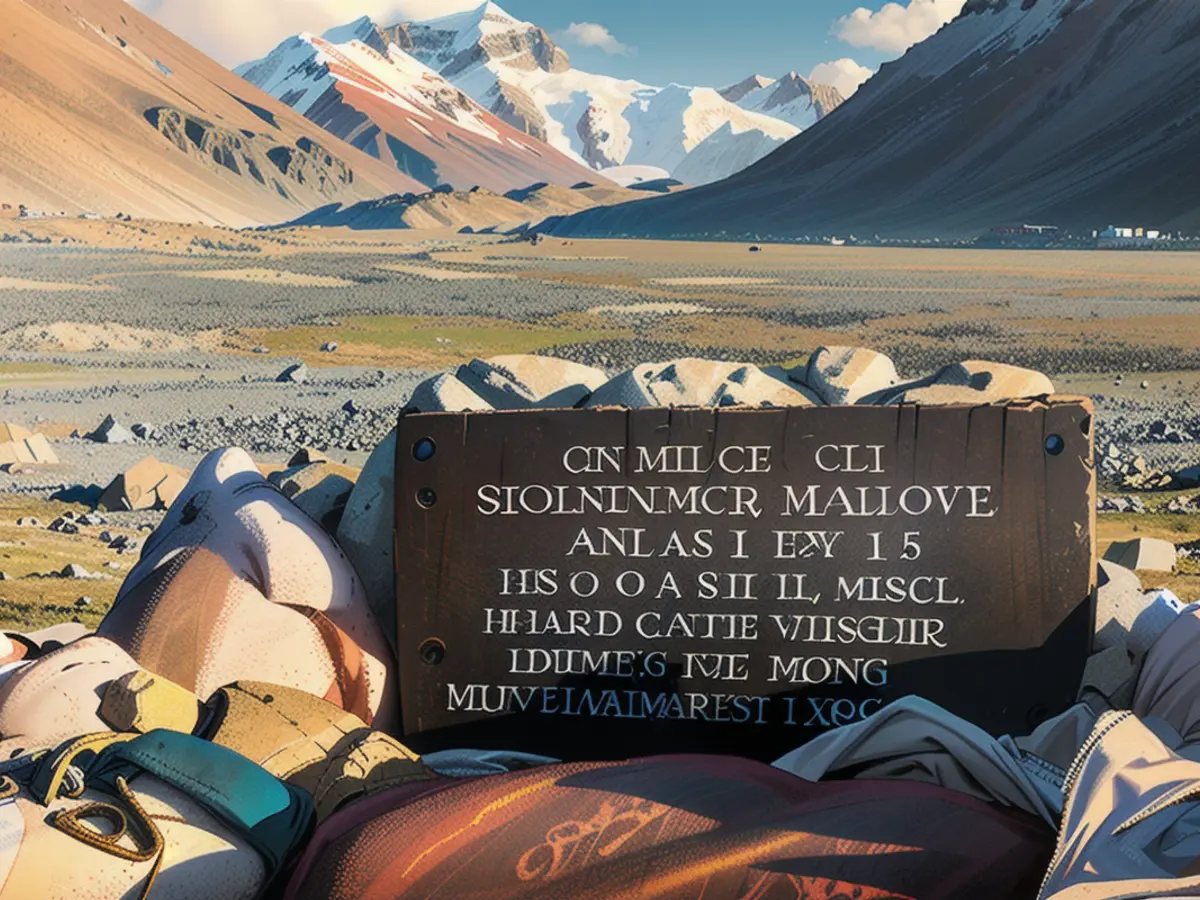One hundred years ago, their fates went unknown on Everest. Could they have reached the summit?
British climbers George Mallory and Andrew "Sandy" Irvine vanished on June 8, 1924, 800 feet short of the Everest summit. Their fates have remained a mystery for nearly a century.
In 1999, Mallory's body was discovered, raising hopes that it could provide clues as to whether they had reached the summit. However, the camera Mallory would have used to document their ascent was not with the body, leaving the question of whether the two made it all the way to the top still unanswered. Irvine's body has never been found.
Now, as the 100th anniversary of their disappearance approaches, one researcher claims to have solved the mountaineering world's most enduring enigma.
Graham Hoyland, author and great-great-nephew of another expedition member, believes he's cracked the case by studying the weather reports from the 1924 expedition.
Hoyland, who has summited Everest nine times in search of the missing men, argues that falling air pressure is the key to understanding Mallory and Irvine's fate. His relative, Howard Somervell, had tracked the weather during the expedition and recorded a significant drop in barometric pressure between June 8 and June 9.
According to Hoyland, a 10 millibar drop in pressure could have led to hypoxia, a potentially fatal condition caused by oxygen deprivation. Such a drop was also reported in the 1996 tragedy on Mount Everest, where 8 climbers died.
"They were climbing into an absolute shitstorm – not only a blizzard but a sort of snow bomb," Hoyland told CNN. "It's terrifying - the temperature drops hugely, you're gasping for breath. There are winds of 1,000 knots. One guy I know was blown off the mountain, and ended up further up the mountain."
With the increased altitude due to the drop in air pressure, Hoyland considers the mountain to be an "invisible death trap."
Mallory and Irvine had been ascending along the northwest ridge and were already facing long odds. Mallory himself had written to his wife that he estimated his chances of reaching the summit at 50 to 1. But, Hoyland proposes, they would have been completely unprepared for the conditions that hit them.
"Mallory had seen Norton and Somervell get to within 1,000 feet of the top on 4 June using no oxygen equipment; it would have seemed reasonable to assume that it was possible to reach the summit with the apparatus," he writes in a forthcoming book. "What he didn't know was that the rapidly falling air pressure was effectively making the mountain even higher."

Hoyland contends that the pair's clothing would not have offered enough protection in a blizzard or overnight. Previously, speculation had suggested they may have reached the summit but died on the way down, but Hoyland sees this as mere optimism.
"I'd been trying to prove that Mallory had climbed Everest for years and years - I wanted to prove that I was the 16th Briton to climb it, not the 15th. But unfortunately when you read facts and they're different, you have to change your mind. You can't carry on being a wishful thinker," he said.
The summit was not officially reached until 1953, when New Zealand mountaineer Edmund Hillary made the first documented ascent.
Since then, the story of Mallory and Irvine's disappearance has captivated adventurers and thrived on speculation.
In 1933, another climber, Percy Wyn-Harris, discovered an ax that was believed to belong to Irvine. In 1936, Frank Smythe claimed to have seen two bodies in the distance at around 8,100 meters (26,575 feet) – the estimated height of the summit. But with no definitive proof, the mystery of their fate endures.
Hoyland suggests that the key to solving the mystery lies in the previously overlooked weather reports held at the Royal Geographical Society in London.
Years ago, Chinese climber Wang Hongbao thought he caught sight of a body during his ascent in 1975.
In 1999, a team led by Hoyland found Mallory's body at 26,700 feet, which was 2,335 feet short of the peak. Hoyland suspects that Mallory and Irvine were connected to one another during their descent and fell while trying to head back to base camp. He believes that Mallory probably survived the initial slip, but later took another deadly fall. Irvine's corpse has never been traced.
Remaining on Mallory's body were some of his belongings, like goggles in his pocket, indicating he'd possibly experienced darkness or poor visibility. Despite this, there was no sign of a photograph of his wife, which he intended to leave at the summit.

Scholars have debated over the years that the absence of the photo might indicate the pair had achieved the summit and slipped while returning. Nonetheless, Hoyland argues that this is not the case. The records mentioned a blizzard hitting the mountain at 2 p.m., much earlier than they could have reached the summit. The lack of the photo apparently doesn't mean anything to him, as Mallory was forgetful.
In his centenary letter to his wife, Mallory wrote about peering out of a tent door into a world of snow and fading aspirations, describing it as "a bad time altogether." Although both were ailing, he was unsure about his physical fitness.
According to Hoyland, who spoke at a Royal Geographical Society event about the centenary, "Everest makes people mad."
He believes that Mallory's drive to conquer Everest consumed him, driven by the desire to achieve fame.
"Mallory was a teacher but mingled with the Bloomsbury set, a group of British intellectuals, artists, and thinkers centered around London in the early 20th century," he said. "Everyone he knew was a famous author or a Nobel laureate, and he got enthralled by it [the idea of Everest]."
Hoyland defines "summit fever" as a phenomenon where, upon seeing the summit, climbers become blinded by the allure of success—"death or glory." He claims to have endured the same compulsion.
"I know that feeling. You become completely possessed by this mountain. Mallory was consumed by Everest, and it cost him his life," he said.
Nowadays, Hoyland swapped mountaineering for extreme sailing and feels Everest has evolved into "a non-mountaineer's mountain."
"There are wealthy individuals treating it as a trophy. I'd rather not have it be the highest," he declared.

"I think the best thing to occur would be if the top 800 feet were to crumble and fracture," he added.
Read also:
- Fear of escalation in the Middle East: US Secretary of State Blinken travels to the region again
- Government circles: US Secretary of State Blinken to travel to Middle East again
- Bridging days 2024: How you can double your vacation this year
- Germany has wanderlust: how tour operators and airlines are looking ahead to the next travel year
After discovering Mallory's body in 1999, the absence of his camera raised questions about whether they had reached the Everest summit. (from the given text)
As the 100th anniversary of their disappearance approaches, the question of whether Mallory and Irvine reached the summit remains unanswered due to the absence of crucial evidence. (following from the given text and incorporating the words 'travel')
Source: edition.cnn.com








